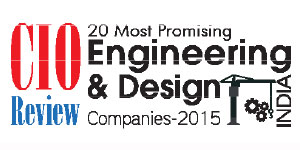 For the past 250 years, manufacturing meant mass production in factories to meet supply and demand. Costs were determined by volume, and unique things were expensive; however, today, the rapid democratization of technologies is disrupting the way we make things at all stages of manufacture and across all industries. The change in fabrication processes and the “consumerization” of design is enabling companies and individuals to create customized products that are not only reasonably priced, but often more innovative and impactful. This fundamental change in the way we make things is bringing radical change to the fields of manufacturing, business, and sustainability and to society at large.
For the past 250 years, manufacturing meant mass production in factories to meet supply and demand. Costs were determined by volume, and unique things were expensive; however, today, the rapid democratization of technologies is disrupting the way we make things at all stages of manufacture and across all industries. The change in fabrication processes and the “consumerization” of design is enabling companies and individuals to create customized products that are not only reasonably priced, but often more innovative and impactful. This fundamental change in the way we make things is bringing radical change to the fields of manufacturing, business, and sustainability and to society at large. 
Autodesk 360 helps design, engineering and project teams work together with clients across geographically dispersed locations on a single platform
The world is now entering a new era of manufacturing, one characterized by complex, multidisciplinary systems, proliferation of cloud and mobile technologies, interconnected products, new means of production and changing customer expectations. In this era, the manufacturing landscape will look significantly different. Small start-up manufacturers will be empowered to disrupt markets and successfully bring innovation faster and cheaper than established manufacturers who in turn, will have to rethink the way they do business if they wish to stay relevant. A new generation of professionals, born in the Internet era and very comfortable with sharing and reusing information, is entering the workforce. People from around the world, who may never meet,are collaborating to solve problems in ways that historically simply hasn’t been possible. As a result, manufacturers are recognizing that the best product ideas may actually be outside their corporate walls and are now experimenting with new collaborative methods, such as crowd sourcing, to harvest ideas from aspiring designers, potential customers, or even the general public.When the Government of India expresses its intent to give a much needed push to India’s manufacturing economy it needs to seen in the above context. Indian industry would do well to keep abreast of these futuristic trends as India seeks to become the world’s manufacturing destination.
A Design Led Revolution
Product development is crucial to manufacturing. The management of the entire production process determines the quality of a product in terms of its sustainability, feasibility and also marketability. If we look at product manufacturing, some steps involved include Prototype Design, Prototype Testing, Product Manufacturing, Simulation of the final product and testing it in real world conditions. 3D Design technologies are increasingly helping manufacturers worldwide in developing innovative products and also bring these products to market faster.
Enthusiastic adoption of 3D Design technologies will help Indian manufacturers to become competitive internationally. Today 3D manufacturing is used to make components for aircraft and automobiles, medical prosthesis and also human organs. In fact, the world’s greatest societies and cultures in history are often remembered by the designs they left behind – the Pyramids, the Parthenon, European cathedrals, the large multi-decked galleons of the explorers, and perhaps the Ford Model T or the first airplane. This begs the question, what will be our legacy?
Autodesk, the world leader in 3D Design software finds itself at the center of this design led revolution in manufacturing. Headquartered out of United States, Autodesk’s portfolio of software and apps empowers companies of all sizes, creative visionaries, students and consumers to conceptualize, analyze, simulate and communicate their ideas and make them real. Using Autodesk design software, customers can create data-rich intelligent 3D models of their project, and then leverage that information to gain greater insight, make more informed decisions and create better engineered, more beautiful and believable products and projects.
“Over the years, Autodesk has helped industry leaders excel in product development – that will continue,” says Pradeep Nair, Managing Director India & SAARC, Autodesk. “The big firms, with access to capital and resources, have embraced technology, but what about smaller firms that lag behind? We have always had a focus on democratizing technology. How do we help young, growing firms compete at the big table and win?,” Pradeep added.
Making design software more accessible has been the company's strategy since its start in 1982, when it offered a cheaper and (relatively) easier way to create 2D designs on personal computers versus requiring dedicated and costly workstations. Autodesk also was among the first to allow hundreds of other software companies to create products that hook into its programs.
This universe of add-on products gave Autodesk an edge over its competitors. The company has continued to innovate aggressively and today, they are the leading enablers of design in the 3D space across all industry sectors – Manufacturing, Automotive, Media & Entertainment, Architecture, Engineering & Construction and Infrastructure. Autodesk boasts of a customer base today that includes the likes of Aston Martin, Nike, Escorts and Ashok Leyland.
The Engineering Journey
From documenting designs, to creating layouts and producing drawings that comply major drafting standards, Autodesk’s engineering journey bears no sign of being conventional. Pradeep explains, “In the early days of CAD, Autodesk was the disruptor in the Era of Documentation with the introduction of AutoCAD. But the problem we had to solve was relatively easy: we simply moved 2D drawings onto a computer. This was the first era of disruption for CAD vendors. And we led the way.”
With an aim to reduce inconsistency in design process and speed up documentation work, Autodesk launched its flagship product “AutoCAD” in 1982. The next disruption was the Era of Optimization. In this era, where many customers are today, they use Autodesk tools like Revit, Inventor, 3ds Max and Maya to create 3D models and to visualize and optimize a design.
Now, the proliferation of cloud and mobile technologies is dramatically changing the way design is done and who is doing the designing. Design led revolution in the cloud is the Era of Connection that allows design and engineering companies to apply infinite computing power of the cloud to conduct advanced simulation, rendering and design optimization, breaking the compute limits of isolated desktop PC workstations to produce better, more cost-effective designs dramatically faster than ever before. And to do all of these at a fraction of what it would’ve cost previously. Autodesk’s leading the change in the industry with Autodesk 360, a cloud powered project collaboration platform, allows designers and engineers to explore and prove, much more quickly than ever before, whether an idea will work or not, and to foresee the outcome to minimize unintended consequences.
Autodesk understands the challenges of many engineering service providers who work with designers and engineers residing in dispersed geographies and hence started its journey to build collaboration and maintain fidelity and integrity of designs across multiple locations. Pradeep says, “Collaboration across multiple geographies is critical in today’s connected world. Autodesk 360 helps design, engineering and project teams work together with clients across geographically dispersed locations on a single platform. Teams can view, search and share data in the cloud using desktop, web and mobile devices”.
collaboration tools.
Democratizing Design
Over 100 million people use Autodesk software like AutoCAD, Revit, Maya, 3ds Max, Fusion 360, and a host of consumer products like 123D Catch, Sketchbook, Pixlr and many more to unlock their creativity and solve important design, business, engineering and environmental challenges. Autodesk, is today committed towards democratizing design technology through better access, streamlined workflows, better connectivity to enhance means of production.
To provide easy access and enhance ease of usage, Autodesk began transforming its business to include cloud and mobile offerings a few years ago. Autodesk software is now available on subscription and the company provides a unique three tier subscription based model, more specifically, maintenance subscription (for software updates, access to older version files, flexible licensing, support etc), Desktop subscription (designed to be simple, affordable and accessible) and Cloud subscription (to utilize the computing power of the cloud to develop files and free up desktops). These flexible subscription options powered with the cloud provides Autodesk’s customers with affordability and accessibility, hence democratizing design technology overall.
“We make it possible for our customers to consume technology in ways that align best to the way they work”, said Pradeep.
Transforming the traditional ways of manufacturing to go beyond the capabilities of engineering services, Autodesk provides digital prototyping tools to help engineers and designers experience 3D CAD designs virtually, even before they’re built. By connecting every phase of the design process through a single digital model, its Digital Prototyping solutions let the engineering teams test and optimize 3D CAD designs, helping to drive innovation, achieve higher quality, and speed time to market. In parallel, the company also provides solutions such as Inventor® 3D CAD, 3ds Max® and Fusion 360 to enhance Digital Prototyping capabilities, thereby to quickly visualize ideas, simulate and evaluate designs.
The Engineering Journey
From documenting designs, to creating layouts and producing drawings that comply major drafting standards, Autodesk’s engineering journey bears no sign of being conventional. Pradeep explains, “In the early days of CAD, Autodesk was the disruptor in the Era of Documentation with the introduction of AutoCAD. But the problem we had to solve was relatively easy: we simply moved 2D drawings onto a computer. This was the first era of disruption for CAD vendors. And we led the way.”
With an aim to reduce inconsistency in design process and speed up documentation work, Autodesk launched its flagship product “AutoCAD” in 1982. The next disruption was the Era of Optimization. In this era, where many customers are today, they use Autodesk tools like Revit, Inventor, 3ds Max and Maya to create 3D models and to visualize and optimize a design.
Now, the proliferation of cloud and mobile technologies is dramatically changing the way design is done and who is doing the designing. Design led revolution in the cloud is the Era of Connection that allows design and engineering companies to apply infinite computing power of the cloud to conduct advanced simulation, rendering and design optimization, breaking the compute limits of isolated desktop PC workstations to produce better, more cost-effective designs dramatically faster than ever before. And to do all of these at a fraction of what it would’ve cost previously. Autodesk’s leading the change in the industry with Autodesk 360, a cloud powered project collaboration platform, allows designers and engineers to explore and prove, much more quickly than ever before, whether an idea will work or not, and to foresee the outcome to minimize unintended consequences.
Autodesk understands the challenges of many engineering service providers who work with designers and engineers residing in dispersed geographies and hence started its journey to build collaboration and maintain fidelity and integrity of designs across multiple locations. Pradeep says, “Collaboration across multiple geographies is critical in today’s connected world. Autodesk 360 helps design, engineering and project teams work together with clients across geographically dispersed locations on a single platform. Teams can view, search and share data in the cloud using desktop, web and mobile devices”.
collaboration tools.
Democratizing Design
Over 100 million people use Autodesk software like AutoCAD, Revit, Maya, 3ds Max, Fusion 360, and a host of consumer products like 123D Catch, Sketchbook, Pixlr and many more to unlock their creativity and solve important design, business, engineering and environmental challenges. Autodesk, is today committed towards democratizing design technology through better access, streamlined workflows, better connectivity to enhance means of production.
To provide easy access and enhance ease of usage, Autodesk began transforming its business to include cloud and mobile offerings a few years ago. Autodesk software is now available on subscription and the company provides a unique three tier subscription based model, more specifically, maintenance subscription (for software updates, access to older version files, flexible licensing, support etc), Desktop subscription (designed to be simple, affordable and accessible) and Cloud subscription (to utilize the computing power of the cloud to develop files and free up desktops). These flexible subscription options powered with the cloud provides Autodesk’s customers with affordability and accessibility, hence democratizing design technology overall.
“We make it possible for our customers to consume technology in ways that align best to the way they work”, said Pradeep.
Transforming the traditional ways of manufacturing to go beyond the capabilities of engineering services, Autodesk provides digital prototyping tools to help engineers and designers experience 3D CAD designs virtually, even before they’re built. By connecting every phase of the design process through a single digital model, its Digital Prototyping solutions let the engineering teams test and optimize 3D CAD designs, helping to drive innovation, achieve higher quality, and speed time to market. In parallel, the company also provides solutions such as Inventor® 3D CAD, 3ds Max® and Fusion 360 to enhance Digital Prototyping capabilities, thereby to quickly visualize ideas, simulate and evaluate designs.




